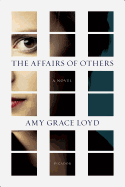
| Publisher: | Picador | |
| Genre: | Fiction, Literary | |
| ISBN: | 9781250041296 | |
| Pub Date: | August 2013 | |
| Price: | $24 |
| Starred | Fiction |
by Amy Grace Loyd
In her debut novel, The Affairs of Others, Amy Grace Loyd has created a protagonist who is enigmatic, shy, aloof--and passionate and sexually reckless. Celia, a young widow with no family, no friends, buys a small apartment building in Brooklyn and takes in four tenants: Mr. Coughlan, an elderly man whose daughter had left him at an assisted living facility; Angie and Mitchell, a couple at odds about whether to have a child; and George, a teacher who sublets to Hope, whose husband recently left her for another woman. What follows is a slow dance of walls coming down. Mr. Coughlan disappears, Mitchell is seen with another woman, Hope takes up with Les, a brute of a man.
All semblance of separateness among the building's residents vanishes when Celia overhears the sexual congress of Hope and Les, at first erotic and then violent. Hope is injured; while she is hospitalized, Celia prowls her apartment. Then, she begins to snoop in the other apartments. Mr. Coughlan's daughter accuses her of not being watchful of her father; Celia goes to look for him.
Both Celia and Hope seem to be in fugue states, not recognizable to themselves, and in this condition, they gravitate toward one another, in friendship, solace and, eventually, intimacy. Hope's grown children enter the picture and Celia is mightily attracted to her son, Leo, who reciprocates.
The good news is that Celia is beginning to "move on" after the death of her husband. In searching for Mr. Coughlan, worrying about Angie and Mitchell, accommodating new feelings for a man and a woman, she is no longer isolated. --Valerie Ryan, Cannon Beach Book Company, Ore.
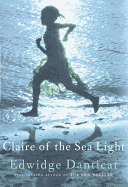
| Publisher: | Knopf | |
| Genre: | Fiction, Cultural Heritage, Sagas, Literary | |
| ISBN: | 9780307271792 | |
| Pub Date: | August 2013 | |
| Price: | $25.95 |
| Fiction |
by Edwidge Danticat
Edwige Danticat's Claire of the Sea Light, which began as a short story in the 2010 anthology Haiti Noir, succeeds magnificently as a novel, a love letter to Haiti and an exceptionally clear-eyed look at its sorrows and failures. It builds on themes and structure from previous works such as Krik? Krak! but feels fresh and vivid.
At the novel's heart is Claire Limyè Lanmè, a child raised by her father, Nozias, an illiterate fisherman, after her mother died in childbirth. It is the morning of Claire's seventh birthday. Nozias has often wondered whether he should give Claire away, unable to imagine providing a future for her. He has asked Gaelle Cadet Lavaud, who had been kind to his wife and who has lost her own husband and daughter, to take the child. Gaelle has refused in the past; today, as the village men comb the beach in search of a fisherman lost at sea, she agrees, but then Claire disappears.
The novel unspools from here, going back through each of Claire's previous birthdays to tell the story of someone who died that day and who they left behind, however close or unsubstantial their connection to Claire and Nozias. Characters on the periphery of one story take center stage later with a story of their own, where Claire briefly appears. In this indirect, looping and overlapping way, we piece together what happened both over the course of a single day and through the years. Danticat shows how the past infuses the present, how lives overlap, unknowable but essential. This is a stunning, complex and compassionate novel, and ultimately a hopeful one. --Jeanette Zwart, freelance writer and reviewer

| Publisher: | Pamela Dorman | |
| Genre: | General, Fiction, Romance, Historical - General, Contemporary Women, Historical | |
| ISBN: | 9780670026616 | |
| Pub Date: | August 2013 | |
| Price: | $27.95 |
| Fiction |
by Jojo Moyes
Jojo Moyes follows her word-of-mouth hit Me Before You with The Girl You Left Behind, a story that unfolds in two times and places. The novel opens in 1916 in a small French town, where German soldiers commandeer Sophie and her sister Helene's hotel for dinner every night, forcing the sisters to cook and serve meals like servants. A portrait of Sophie, painted by Edouard, her husband, catches the Kommandant's eye, and he begins showing her kindnesses not extended to anyone else. Sophie risks her honor by asking the Kommandant to help free Edouard from a prison camp, for which the German wants something in return.
In 2006, Liv is still mourning her husband, David, four years after his sudden death. Her most prized possession is a painting David gave her on their honeymoon. Then a man comes to claim it as restitution for the painter's descendants, saying the piece was stolen from painter Edouard Lefevre's family during World War I. Liv fights to keep the painting at the risk of losing everything, including a new chance at love.
Moyes's prose is very accessible, easily taking readers inside Sophie's and Liv's psyches. The dual timelines, though, aren't entirely successful, since fans of historical novels might prefer the 1916 sections, while those who like contemporary fiction might wish to remain in the present. But both parts have strong lead characters, and the novel asks readers to explore what's right and wrong--and the gray area in between. --Elyse Dinh-McCrillis, writer and editor blogging at Pop Culture Nerd.
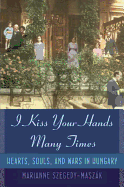
| Publisher: | Spiegel & Grau | |
| Genre: | Jewish, General, History, Biography & Autobiography, Historical, Personal Memoirs | |
| ISBN: | 9780385524858 | |
| Pub Date: | August 2013 | |
| Price: | $27 |
| Starred | Biography & Memoir |
by Marianne Szegedy-Maszák
Some revelations have the power to change a life. In Marianne Szegedy-Maszák's touching memoir of her parents, the secrets she unlocks in translating her deceased parents' love letters from Hungarian to English cast her family in a new light. While her parents' immigration from Hungary after World War II and her Jewish mother's refugee status during the war were no secret, the fraught and intricate love story told in the letters is one that she never heard when she was growing up.
Szegedy-Maszák discovers that her withdrawn and depressed father, Aládar, once possessed the initiative to court her mother, Hanna Kornfeld, against all odds--drawing upon the same courage with which he used his diplomatic position to oppose the Nazi regime, which led to his imprisonment in Dachau. Her mother, who always seemed conventional as a parent, was of the mettle to inspire and preserve a love that lasted through war and Nazi concentration camps. The impact of these revelations inspired Szegedy-Maszák to explore her family's past further, taking her into the pitiless fray of World War II, where events of unthinkable horror were unfolding. The juxtaposition of the historical and personal here conveys the sheer magnitude of the forces arrayed against the protagonists and their loved ones.
What is most remarkable about the love story of Aládar and Hanna is not so much the obstacles at its beginning, but the way their love triumphed over years of trauma and separation. The book is animated by the author's excitement in discovering the power of that love and its endurance through so many hardships and even until death. --Ilana Teitelbaum, book reviewer at the Huffington Post
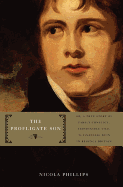
| Publisher: | Basic | |
| Genre: | General, Modern, Great Britain - General, Biography & Autobiography, History, 19th Century, Social History, Europe, Historical | |
| ISBN: | 9780465008926 | |
| Pub Date: | August 2013 | |
| Price: | $28.99 |
| Biography & Memoir |
by Nicola Phillips
William Jackson had incredible advantages available to him at birth. The only heir of a well-off gentleman who had made his fortune in India, William stood to inherit a large fortune. Sadly, starting in his early teens, he became the plague of his parents' life--constantly running away from school, gambling away his allowance and consorting with prostitutes.
Although Regency England allowed for a great deal of license in society, William's actions soon put him beyond the pale. Owing money to creditors was acceptable, but lying about debts, forging signatures and refusing to pay friends was shocking. William's behavior quickly escalated after he left school, and he ended up in debtors' prison.
Mr. Jackson refused to pay any of William's debts, washing his hands of his degenerate, unrepentant son. After several years of legal maneuvering, William could no longer avoid the inevitable, and was sentenced to be transported to the penal colony in Australia, where he slowly declined into abject poverty and alcoholism.
Nicola Phillips's The Profligate Son deftly weaves together letters from William and his father, and other family members, along with the unpublished text of Filial Ungratitude, which Mr. Jackson wrote to defend his actions in disowning William, and historical information about the state of prisons and the legal system in 19th-century England. The Profligate Son is a fascinating (and all too familiar) story--even today, in our modern era of massive debts. --Jessica Howard, blogger at Quirky Bookworm
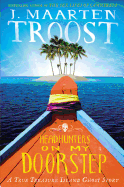
| Publisher: | Gotham | |
| Genre: | Travel, Australia & Oceania, Special Interest, General, Essays & Travelogues, Adventure, Literary | |
| ISBN: | 9781592407897 | |
| Pub Date: | August 2013 | |
| Price: | $26 |
| Biography & Memoir |
by J. Maarten Troost
Less a straightforward narrative than an intimate memoir, Headhunters on My Doorstep binds external exploration with internal journey--in this case, the struggle to overcome a fierce case of alcoholism. Told through the jovial, offbeat voice of J. Maarten Troost, however, recovering from addiction in the far corners of the earth can seem exciting... even fun. Though he's been compared to Bill Bryson, Troost's proclaimed hero in travel writing is Robert Louis Stevenson. Headhunters is in fact a homage to the late author and explorer, as Troost retraces his path to the Marquesas, the Tuamotus, Tahiti, the Gilberts and Samoa.
Troost has previously written about the Pacific Islands in The Sex Lives of Cannibals (2004) and Getting Stoned with Savages (2006). Though he arrives in the Marquesas with fellow tourists, his status as such never escapes him. He is keen to point out how Western contact has altered the region, perhaps based on his experience as a consultant for the World Bank. Wry though he may be, Troost's infatuation with the islands is evident in every quip and bemused observation. Of a mountain on Hiva Oa, he recalls a "striking prominence" around which a "swirl of puffy white clouds elicited a dramatic windswept plume, as if God's hair dryer was now focused on its slopes."
Headhunters on My Doorstep is a story of the strength in humor, the thrill in strangeness and the joy in stretching the limits of our lives. --Annie Atherton

| Publisher: | Little, Brown | |
| Genre: | Human-Computer Interaction, Computers, Philosophy & Social Aspects, Social Science, Social Aspects, Science, Media Studies | |
| ISBN: | 9780316208260 | |
| Pub Date: | August 2013 | |
| Price: | $28 |
| Psychology & Self-Help |
by Alex Soojung-Kim Pang
In The Distraction Addiction, Alex Soojung-Kim Pang investigates our susceptibility to digital interruption and suggests ways to practice more "contemplative computing." Pang, a futurist with a Ph.D. in the history of science, cites current productivity studies--and evidence of Stone Age adhesives--to distinguish synergistic multitasking (in which related activities converge toward a unified goal) over the deceptive bustle of switch-tasking (in which frequent toggling among unrelated activities plunders mental overhead). When we fracture our work "flow" by peeking at our in-boxes or Facebook walls or favorite news sites, we are switch-tasking, not multitasking.
Written in smooth prose, The Distraction Addiction does not break new ground but blends personal anecdote, summarized research and interviews to motivate readers to become the boss of their own tech. Pang offers myriad approaches to achieve brain-over-bytes control, including using "zenware" programs that declutter the onscreen workspace, observing a "digital Sabbath" and strengthening cognitive calm through breathing techniques and meditation. In one of his many interesting discursions, he describes Charles Darwin's garden at Sandwalk as a paragon of how "restorative environments and contemplative spaces" can help focus the mind.
More philosophical and eclectic than efficiency bibles like David Allen's Getting Things Done, the final section of The Distraction Addiction lays down Pang's principles of contemplative computing and rules for "mindful" social media use. Reading this manual of gentle intellectual persuasion may lead you to deploy your own digital resources in a more focused and intentional manner, assuming you can refrain from checking your e-mail long enough to absorb its lessons. --Holloway McCandless, blogger at Litagogo: A Guide to Free Literary Podcasts

| Publisher: | Knopf | |
| Genre: | History, Medical, Life Sciences, Oncology, Science, Biology | |
| ISBN: | 9780307595140 | |
| Pub Date: | August 2013 | |
| Price: | $27.95 |
| Science |
by George Johnson
George Johnson is a science writer (Fire in the Mind) "comfortable with the sharp edges of cosmology and physics" who chose to tackle the "wet, amorphous, and ever-changing terrain" of cancer after his wife's uterine cancer diagnosis. While The Cancer Chronicles may not provide inspiration or even hope, his survey of this ubiquitous scourge is richly informative, unerringly balanced and undeniably compelling.
"One of the most elusive questions about cancer is how much is timeless and inevitable--arising spontaneously inside the body," Johnson writes, "and how much has been brought on by pollution, industrial chemicals, and other devices of man." So he begins in Dinosaur, Colo., where the earliest known case of bone cancer was found in a mid-Mesozoic fossil. He then explores man-made and environmental factors--including cell phones, microwaves, food and radon---but is left with only smoking, the sun, obesity and old age as "unambiguous instigators."
A man of science, Johnson understands "the natural tendency of the world toward disorder," but recognizes "the curse of being human: this idea that you get cancer because you did something wrong or someone--something--did it to you." This drives Johnson to measure the radon levels in his home and wonder if his desire to forgo children contributed to his wife's cancer. "Understanding cancer," he ultimately realizes, "will require no less than understanding the deepest workings of the human cell."
While Johnson does not arrive at any easy answers or "quick fix" solutions, his findings are surprising and thought-provoking. --Kristen Galles, blogger at Book Club Classics
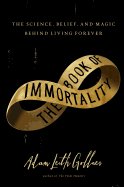
| Publisher: | Scribner | |
| Genre: | Body, Mind & Spirit, Afterlife & Reincarnation | |
| ISBN: | 9781439109427 | |
| Pub Date: | August 2013 | |
| Price: | $28 |
| Science |
by Adam Leith Gollner
The Book of Immortality is a bold, entertaining, thought-provoking exploration of the pursuit of living forever, or at least staying young and vital past our appointed time. Adam Leith Gollner (The Fruit Hunters) skillfully weaves various strands of information together: in addition to recounting religious traditions and myths of eternal life from around the world (and throughout history), he examines the competing scientific claims, attends spiritualist conventions and searches Florida for the legendary Fountain of Youth.
If this were merely a work of history it would be admirable, but Gollner's personal journey combines wonderment, humor and good grace in the face of possible charlatans and quacks. He charms with his ability to enter into any dialogue respectfully and with his unfeigned enthusiasm for the subject, never pandering to readers or looking down on his subjects. The high point of the book is a trip with the famous magician David Copperfield to a private island, where Copperfield reluctantly shares information about a lake that might grant eternal youth. Gollner's spot-on reportage of Copperfield's edgy mix of ego, charm, brilliance and lunacy perfectly encapsulates the geniuses and madmen drawn to this subject throughout history.
The Book of Immortality is first-rate entertainment, a blast of intellectual stimulation and vivid reporting. Readers won't discover the secret of eternal youth within the pages, but they'll have a damn good time trying to. --Donald Powell, freelance writer

| Publisher: | W.W. Norton | |
| Genre: | Poetry, Anthologies (multiple authors) | |
| ISBN: | 9780393239478 | |
| Pub Date: | August 2013 | |
| Price: | $23.95 |
| Poetry |
by Jim Kacian, Philip Rowland, Allan Burns, editors
Haiku, the traditional Japanese art of a three-line poem with a 5-7-5 syllable structure has come a long way since Ezra Pound introduced readers of Poetry to the form a century ago. Though modern English-speaking haiku writers often forgo the traditional syllable and line count, the insistence on close, concrete observation of things as they are remains.
It's almost unfair to single out examples from the more than 800 poems in Haiku in English, as they are of uniform excellence, but here's one from Ruth Yarrow:
new leaf--
a tiny beetle chews a hole
to the sky.
And Roberta Beary:
all day long
i feel its weight
the unworn necklace.
John Crook offers a wonderful inversion of the cosmic and particular:
summer solstice--
the sun reaches a new place
on the fridge.
There are several other things to recommend this anthology beyond its generous sampling of poetry. Billy Collins's introduction is lucid, knowledgeable and concise; the 70-page overview by co-editor Jim Kacian is even better. Though it ranges from Pound to the Beats and on to modern times, his graceful and intellectually fecund survey is as empty of needless phrases as the poems it describes.
Haiku in English is an artful cornucopia of a book that carries a big thump of cultural relevance and keen-eyed observation, giving more than ample witness to a great poetic tradition. --Donald Powell, freelance writer
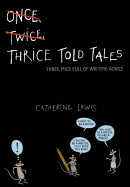
| Publisher: | Atheneum | |
| Genre: | Juvenile Nonfiction, General, Language Arts | |
| ISBN: | 9781416957843 | |
| Pub Date: | August 2013 | |
| Price: | $16.99 |
| Children's & Young Adult |
by Catherine Lewis, illust. by Joost Swarte
Catherine Lewis (Dry Fire) exploits the famous story of the Three Blind Mice to full effect as she cleverly compares and contrasts the impact of various angles on its telling, all the while naming the storytelling strategies plus introducing and defining writing terms.
She names the trio Pee Wee, Mary and Oscar on a page that describes "The Lenses of Psychic Distance," where she differentiates between a reader's view through a telescope, binoculars or magnifying glass. Lewis limits each "lesson" to one or two pages, then sums up the content in a pithy line or two, which she calls "Snip of the Tale" (e.g., on the "Lenses" page: "By choosing to write from outside or from inside a character, an author can influence how involved the reader feels with the character"). One of the few exceptions is the section called "Formula," which offers three recipes and runs four pages. Three pages for "Research" explain the origins of the Three Blind Mice rhyme. An exposé on "Style" gives a flavor of Dickens, Homer and Hemingway, among others. For those who favor visual representation, Lewis includes sentence diagrams and character charts for "Description."
Joost Swarte's ink illustrations play up the humor and hark back to vintage comics with a strong black line. Scenes of the whiskered trio with the farmer's wife and with the cat will especially entertain readers. These brief, digestible nuggets of advice could potentially improve a whole generation of writers--if they heed Lewis's advice. --Jennifer M. Brown, children's editor, Shelf Awareness
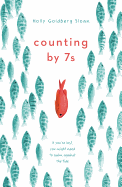
| Publisher: | Dial | |
| Genre: | School & Education, Alternative Family, Juvenile Fiction, Family, Parents | |
| ISBN: | 9780803738553 | |
| Pub Date: | August 2013 | |
| Price: | $16.99 |
| Starred | Children's & Young Adult |
by Holly Goldberg Sloan
Holly Goldberg Sloan's (I'll Be There) 12-year-old heroine draws readers in from the start. Willow Chase is exceptionally smart and socially awkward, and she recognizes that she is both. She becomes obsessive about certain things: counting by 7s, gardening and researching medical conditions, just to name a few.
Willow looks forward to starting at Sequoia Middle School, where she hopes she'll be better at fitting in with the students. She doesn't. It's loud. People mistake her gardening outfit for a custodial uniform, and her perfect standardized test score gets her an accusation of cheating and a sentence of repeated sessions with the guidance counselor. Through these sessions, Willow meets Mai Nguyen, older sister to Quang-ha, who also must be counseled by Dell Duke. Mai, though she's 14, becomes Willow's first real friend since her previous pal moved away. When, in the very first chapter, Willow's adoptive parents die in a car crash, Mai and her family take in Willow until she can find a home.
Willow narrates many of the chapters, and her winning voice and personality propel the novel. The heroine's compulsive curiosity gives her a reason to go on, even if her passion flags in the aftermath of her parents' death. "In my opinion it's not really a great idea to see people as one thing," Willow thinks in response to a letter labeling her "highly gifted," adding, "We are all imperfect genetic stews." Willow's hopeful outlook, despite her dire consequences, can't help but lift readers up right along with her. --Jennifer M. Brown, children's editor, Shelf Awareness
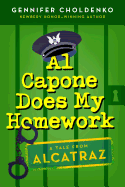
| Publisher: | Dial | |
| Genre: | Friendship, Law & Crime, Social Issues, Juvenile Fiction, Historical, United States - 20th Century | |
| ISBN: | 9780803734722 | |
| Pub Date: | August 2013 | |
| Price: | $17.99 |
| Children's & Young Adult |
by Gennifer Choldenko
Things on Alcatraz are heating up in this wonderful conclusion to Gennifer Choldenko's A Tale from Alcatraz series, begun with the Newbery Honor–winning Al Capone Does My Shirts.
Moose Flannigan's father has been promoted, but it turns out that being the associate warden's kid is no picnic. The rules seem to apply doubly to Moose now, and Darby Trixle--angry for being passed over for the promotion--is determined to give the Flannigan family a hard time. If that weren't bad enough, the cons have a game running against the higher-ups on the island: "Spitting on a guard = 5 [points] / Spitting on a warden = 20 / Making a shiv = 40 / Stealing a knife = 50 / Stabbing a guard = 250 / Stabbing a warden = 500 / Death Bonus: guard = 1,000 / Death Bonus: warden = 5,000."
Though he's only 13, Moose feels it is up to him to keep his father safe and look out for his older sister, Natalie. When a fire breaks out in the Flannigans' apartment, Moose and his friends are determined to figure out who started the blaze. But with accusations flying and tempers rising, this proves easier said than done.
Choldenko does not shy away from putting characters in tough predicaments or danger, yet never leaves them alone to face these challenges. The inventive plot and memorable characters tell a story of friendship, growing up and, every now and then, getting a hand from Al Capone. --Julia Smith, blogger and former children's bookseller
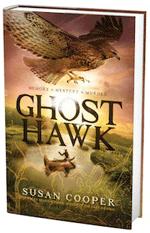
| Publisher: | Margaret K. McElderry/Simon & Schuster | |
| Genre: | Death & Dying, Fantasy & Magic, Social Issues, United States - Colonial & Revolutionary Periods, Juvenile Fiction, Action & Adventure, Historical | |
| ISBN: | 9781442481411 | |
| Pub Date: | August 2013 | |
| Price: | $16.99 |
| Children's & Young Adult |
by Susan Cooper
Ghost Hawk begins with the beauty of a place--its life-giving, life-sustaining beauty--with human beings as the stewards of its waters and shores, plants and animals. Little Hawk and his family have lived on and cared for this land for many generations.
Readers meet Little Hawk, of the Pokanoket Tribe of the Wampanoag Nation, when he is 11 winters old, as he prepares for his proving time. His mother and sister attempt to slip in some extra supplies, but his father intervenes. He gives his son a bow, a knife he got by trading his furs to a white man, and a tomahawk many years in the making. Its stone blade had belonged to Little Hawk's grandfather, and his father before him. Its handle had grown strong over the span of the boy's life as two strands of a bitternut hickory tree grew together, on an island in a saltmarsh. It was his father's work of art, with time as collaborator. "In my father's day, there was still time," says Little Hawk.
In prose that flows like poetry, Susan Cooper (The Dark Is Rising) establishes the sense of abundant time and land. Through Little Hawk's voice, she also conveys a sense of foreboding. Readers observe the rhythms of Little Hawk's daily life, his close relationship with his family, his peers and his village, as well as his closely attuned sense of his surroundings. Three other boys have come of age and will also begin their proving time, but each must accomplish his journey alone. As Little Hawk's father says, "He will come back a man."
After many tests, Little Hawk completes his quest--and returns to a village wiped out by plague. Only his grandmother, Suncatcher, remains. "The scar on your face says that you have come through danger," Suncatcher tells him. The destruction of his village is the first sign that the white settlers have made an irreversible change to their way of life. Little Hawk, Suncatcher and Leaping Turtle, who also returns safely from his proving time, join with another nearby village. The tribal leader, Yellow Feather, has chosen to offer help and friendship to the white settlers. But Yellow Feather suspects that it will not be enough; as an elder of the village explains, "I think our father Yellow Feather fears that they want the land."
Cooper portrays the range of attitudes toward the white settlers through Yellow Feather and his approach, his fellow villagers who are more skeptical of the settlers, and Squanto, who's aligned himself with the settlers. In a pivotal scene in the book, Squanto leads a group of the settlers into the Pokanoket village--the first white men that Little Hawk has ever seen. A white boy just five winters old is with them. Suncatcher offers the men and boy some of her freshly made fish soup, they--politely--refuse it ("The white man is not good at eating our food," Squanto explains). The unwitting rudeness makes a striking contrast to greeting-card images of pilgrims and Native Americans sitting down together at the first Thanksgiving. It's a hint at the kind of misunderstanding that builds into tragic consequences later in the novel.
The scene soon shifts to that of young John Wakely, the child visitor who was five winters old in the Pokanoket village that day. The narrative moves from the serene, elegiac tone of Little Hawk's narrative set in his village to the quickening pace and cacophony of sounds in the Puritan settlement. Through John's perspective, readers gain exposure to the strong views at opposite ends of the settlers' spectrum: those who believe the newcomers should honor the ways of the Native Americans, learn their language and live peacefully beside them, and others who perceive the differences between the two cultures as a chasm. They judge even their own, less rigorously religious countrymen harshly. They cannot imagine that the Pokanokets could have traditions or an ethical code as strong as their own. John, at age 10, nearly the same age as Little Hawk was when he entered his proving time, witnesses an event of such injustice that it shapes the man he will become.
At the heart of the conflict lies the settlers' conviction that one can own land outright, and the Native American belief that the land and all of its bounty belongs to the Great Spirit--no human could own it. Cooper skillfully structures a novel in which young readers come to see the misunderstanding take root, through the eyes of two sympathetic characters--Little Hawk, of the Wampanoag Nation, and John, who arrives with the white settlers. Few characters are all bad or all good. She allows us to see the complexities and motives--mainly a desperation to survive and to preserve the values they hold dear--on both sides. A timeline and author's note credit the primary sources and other documents Cooper used in her research.
This moving and thought-provoking novel invites young readers to consider the lasting legacy of the conflict between the first people who lived in this land we call America and the new arrivals who began to claim it for themselves. Little Hawk and John Wakely may be fictional characters, but they stand in for hundreds of real human beings, past and present, and their love of the land and their dream of peace. --Jennifer M. Brown